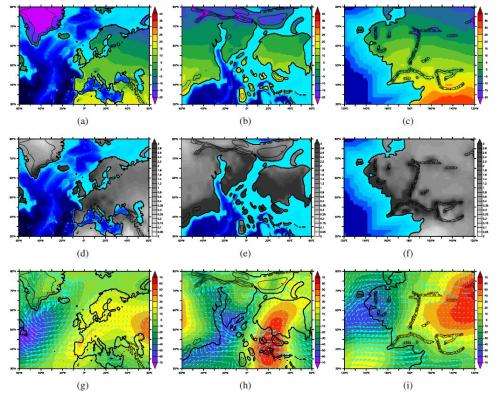December 9, 2013 weblog
Climate team sees LA likeness in Tolkien's Middle Earth

(Phys.org) —Climate scientists from the University of Bristol, UK, have used a climate model, to simulate and investigate the climate of Middle Earth, which is the backdrop of Tolkien's The Hobbit and The Lord of the Rings. In a paper released earlier this month, the study maps where, in the real world, the similarities intersect. The paper shows intersections with real places with similar conditions, using results of a climate analysis of features such as as Middle Earth's rainfall and temperature. The Shire resonates with a region in New Zealand and a part of Britain, regions with matching rainfall and temperatures, while Mordor resonates in places in the US and a part of Australia. Mordor's climate was compared with the south of Australia, much of New South Wales and Alice Springs, as well as western Texas and Los Angeles. Lincolnshire and Leicestershire in the UK were found to be similar to Shire, as were north of Dunedin in the South Island in New Zealand.
"Los Angeles and western Texas are notable for being amongst the most Mordor-like regions in the USA, and in Australia, much of New South Wales, as well as Alice Springs, have an annual average climate very similar to that of Mordor." The paper described Mordor's climate as inhospitable, hot and dry, with little vegetation.
Authorship of the paper is credited to "Radagast the Brown;" the research is from the University of Bristol's climate scientists, who examined the books' descriptions of Middle Earth and their climates. The model simulations were carried out on supercomputers of the Advanced Center for Research Computing at the university. The entire exercise was more than a lighthearted look at Tolkien through climate watching eyes, nonetheless. The paper reflects interest in climate modeling and how real or imagined climates can be simulated. University of Bristol's Dan Lunt, School of Geographical Sciences, whose research is focused on climate modeling, said, "This work is a bit of fun, but it does have a serious side. A core part of our work here in Bristol involves using state-of-the-art climate models to simulate and understand the past climate of our Earth. By comparing our results to evidence of past climate change, for example from tree rings, ice cores, and ancient fossils of plants and animals, we can validate the climate models, and gain confidence in the accuracy of their predictions of future climate."
Climate models are used to predict what might happen to future temperatures and they can also successfully simulate climates from the last Ice Age to the intense warmth of the 'Eocene greenhouse. The paper names its three aims: to demonstrate the flexibility of climate models, to present the modeled climate of Middle Earth, with "some lighthearted discussion and interpretations," and to discuss the strengths and limitations of climate models in general, by discussing ways in which the Middle Earth simulations could be improved.
More information: — 'The Climate of Middle Earth' (PDF, 5.17MB) by Radagast the Brown, describes the results in full, and translations are available for elves (PDF, 5.54MB) and dwarves (PDF, 5.52MB).
© 2013 Phys.org











.jpg)



